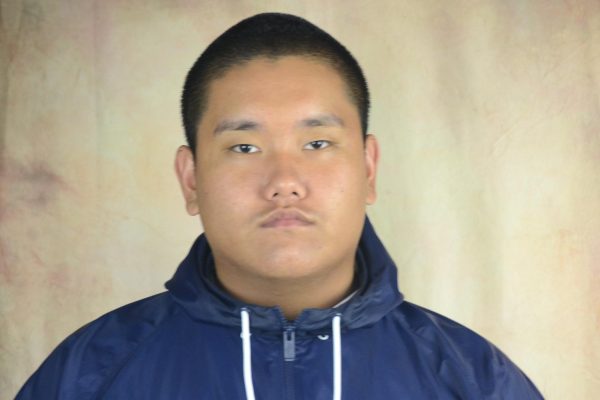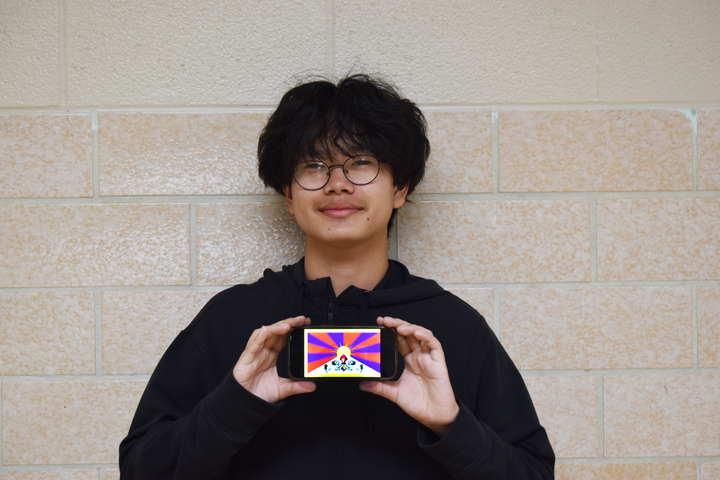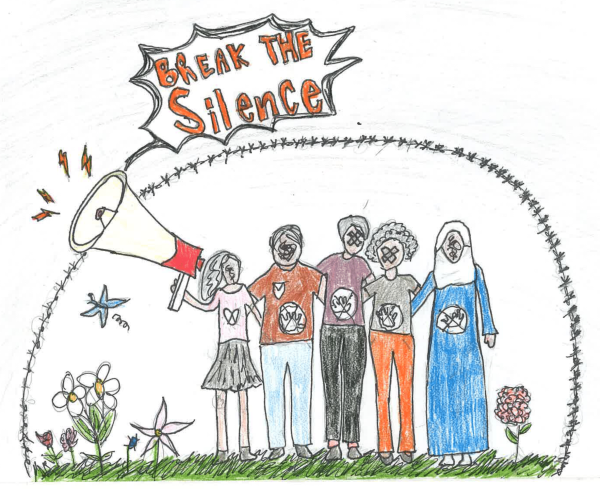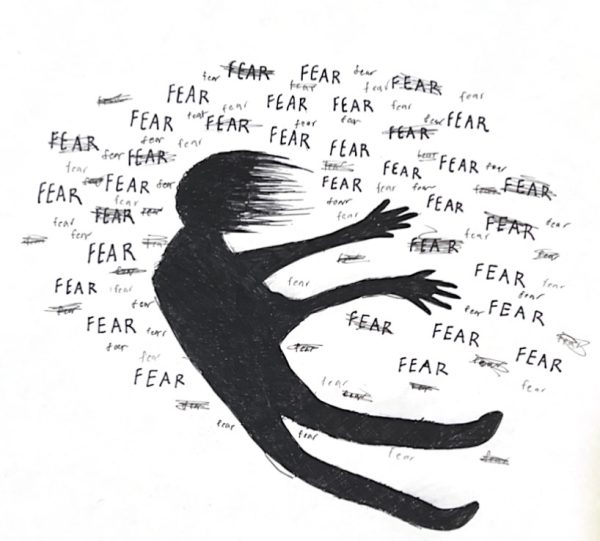When will we start to listen to Tibet’s calls for freedom?
Tenzin Tsangyang (9) is just one Hylander that is part of the beautiful Tibetan culture, waiting to rise again like a phoenix.
For the second year in a row, Tibet under the Chinese Communist Party (CCP) has been ranked number one as the least free country in the world by Freedom House, a nonpartisan research nonprofit. In the category of political rights, scored out of 40, Tibet earned a negative two. For civil liberties, scored out of 60, Tibet earned a three, securing its spot at the top of the overall list. To put that into perspective, notorious dictator Kim Jong Un’s country of North Korea ranked number three.
“[Tibet is] occupied by the Chinese government, and they’ve been occupied for 60-70 years now,” Columbia Heiehgts High School (CHHS) social studies teacher Ms. Kristen Sinicariello said. “When you can’t have popular sovereignty and can’t rule yourself, you don’t have freedom”
Before Tibet fell into the hands of brutal invaders from the CCP, the mighty Tibetan Empire dominated Central Asia from the seventh century to the ninth century and struck fear into any opposing kingdom. At Tibet’s peak, under king Trisong Detsen (who ruled from A.D. 755 until approximately A.D. 800), Tibet ruled parts of Afghanistan, Mongolia and a portion of Pakistan. Tibet also invaded the neighboring Tang Empire and the largest city in the world at that time, known as Chang’an (which was the Capital of the Tang Empire), fell to the hands of Tibet.
History took its course as the Tibetan Empire dissolved after the assassination of the anti-religious King Langdarma in A.D. 838. Tibet remained without a specific ruler for about three centuries thereafter but was influenced by Tibetan religious leaders from Buddhist sects the Sakyapas, Kagyupas, Tsangpa Depas and eventually the Great Fifth Dalai Lama.
From 1639 to 1642, a bloody Tibetan civil war raged throughout Tibet. The Great Fifth Dalai Lama ended the civil war with the help of a Mongol warlord by the name of Gushi Khan, reuniting Tibet. Afterward, the Fifth Dalai Lama became the temporal leader of Tibet, but the tradition carried through history and the Dalai Lama remained the head of religion and government in Tibet up until August 8, 2011. That was the day on which the 14th Dalai Lama handed over all political power to an elected leader by the name of Lobsang Sangye. From that day forward, Tibet officially became a democracy.
The brutal annexation of the peaceful land of Tibet by the CCP is widely unheard of around the world.
“I don’t think a lot of people know the history [of] Tibet just because they don’t teach about it in schools typically,” Ben Roberts (12) said.
After Communist revolutionary Mao Zedong and the CCP took control of China in 1943, one of their top priorities was to absorb Tibet into the Republic of China. In October of 1950, months of failed talks between delegations of the Tibetan Government and the CCP created tension between the two nations and eventually, the People’s Liberation Army of China crossed over the eastern border of Tibet and attacked. In some places, like Denkog, the armed horsemen of Kham (a.k.a. the Khampas, who are known for their ruthlessness) joined forces with the Tibetan army and held off the Communists. But, in some places like Chamdo, 40,000 Chinese soldiers easily took down the outnumbered 8,500 Tibetan soldiers, and the Red Army swept through the cities like a gust of wind.
The Chinese subsequently forced the Tibetan delegation to sign the 17-point agreement — a list of rules that made it seem like Tibet was going to be peacefully restored by China — in 1951. Tibet had no say in any of the 17 points; everything was made by the Chinese. The Tibetan Government in Lhasa didn’t authorize the signing of the 17-point agreement, but because of the growing pressure from the Communists, the Tibetan delegation under the name of the Dalai Lama signed it. Despite being signed by both parties, the Chinese broke several promises made in the document multiple times.
Over 6,000 monasteries were destroyed, monks and nuns were forced to stop practicing their religion, children were forced to kill their parents, citizens would be tortured and imprisoned and there would be Chinese reeducation camps made specifically for Tibetans. Food was scarce. The Chinese demanded over 250 tons of food a day, leaving little to none for the Tibetans. There were reports of eating bugs, rodents and even the bottom of shoes. A Tibetan resistance group called the Chushi Gangdruk (translation: “Four Rivers, Six Ganges”) was started by the heroic Andruk Gompo Tashi, but even with the fighting spirit and the dedication to saving their country, the conflict was just too overwhelming for the Freedom Fighters. On March 17, 1959, after an artillery shell hit close to the Dalai Lama, he and his cabinet made the decision to flee the urban center of Lhasa. Shortly after, the Chinese made their advance into Lhasa, marking the fall of Tibet; over 1.2 million Tibetans were murdered by the CCP.
“They were the best and the bravest of their generation, and we wept together when they were killed alongside their countrymen,” John Kenneth Knaus, CIA aide to Tibet, said when presenting a plaque commemorating the resistance fighters in 2010.
According to the United Nations, over a million Tibetan children have been forcibly taken away and have been relocated to Chinese residential schools, forced to follow a curriculum whose purpose is to destroy the cultural and religious mindset of the young Tibetans. This is just one of the many atrocities that Chinese officials commit on a daily basis toward Tibetans.
The Chinese occupation of Tibet has included state-sanctioned rape, murder and torture, as well as a huge surveillance program made just for Tibetans. Currently, the Chinese government spends more money on surveillance than they do for their own military and defense. The surveillance isn’t relegated to security cameras or microphones either — it’s also for soldiers they send to live within villages to take watch. This program is known as the Zhucun Gongzuo Dui,’ which translates to “Village Team.” There are also countless tracking devices within phones and devices surrounding Tibet, creating a giant firewall used to restrict contact between outer countries.
As any totalitarian government would, the CCP shuts down absolutely anything that hasn’t been blessed through the hands of President Xi Jinping. The really abysmal fact is that most of this persecution is concealed by the iniquitous propaganda machine in China keeping many of its own citizens from knowing the truth.
The Chinese propaganda campaign is so pitiful and has such an influence all over the world, including constant efforts to defame and ridicule His Holiness, the Dalai Lama. Just last month, a ten-second video taken completely out of context was shared all over social media and in several mainstream news outlets. Many would have those unfamiliar with Tibetan culture believe the Dalai Lama spoke inappropriately to a young boy. What many don’t know, however, is that affection in Tibet is greatly known by touch, especially with elders. Touching foreheads, face-cheeks, noses and sticking out tongues is a norm, and His Holiness is known for platonic affection towards anyone he meets. Everything these days is so hypersexualized, especially in the West, that even an innocent, affectionate meeting in public would be considered predatory.
In addition to this ginned-up scandal, His Holiness recognized an eight-year-old Buddhist leader of Mongolia last month, prompting outrage from Chinese propagandists. Online comments from bot accounts with one or two followers or accounts that absolutely worship the President Xi Jinping Regime abounded. Posts and tweets featuring remarks such as “I’m so happy that China has firm control on Tibet” or “Tibet was liberated by the CCP” are just some of the common ones written by the Chinese accounts.
As if needs to be stated, no, Tibet was not a serfdom before being taken over by the CCP. No, 95% of the Tibetan population were not slaves. And no, the Dalai Lama is not a malicious leader who owned slaves. It’s absolutely sickening to hear such lies spread and produced by the CCP and it’s even worse to see that people are believing such deception.
“I feel very sad about how judgemental people are these days and not being rational or not watching the whole video or investigating what happened,” Tashi Dawa, former president of the Regional Tibetan Youth Congress of Minnesota, said. They’re being judgmental and portraying His Holiness as a deviant person, which is so sad. People also need to understand the Chinese government is trying to brainwash and get people all around the world to take a step against His Holiness the Dalai Lama.”
Go Sherab Gyatso, a Tibetan monk and a scholar, was detained by Chinese authorities in October 2020 for advocating for religious freedom in Tibet. He was unfairly charged with “inciting secession” and was sentenced to ten years in a Chinese prison. Human Rights Watch reports that no visitors have been allowed to meet with him and that his health condition is at its absolute lowest. Go Sherab Gyatso has a chronic lung condition that he contracted by serving a prior three-year sentence in another Chinese prison. The Chinese Communist Party has also faced accusations of abusing prisoners as well as holding sham trials for targeted Tibetans. The Chinese courts have been known to just slap an arbitrary charge of “terrorism”, “treason”, or “inciting secession” on cases as they’ve done with thousands of other Tibetans and call it a day. Go Sherab Gyatso is just one of the thousands of Tibet’s political prisoners given extended sentences.
The Chinese also have the world’s youngest political prisoner. In 1995, Gendun Choekyi Nyima was recognized by the Dalai Lama as the eleventh Panchen Rinpoche — the second-highest religious ranking in Tibet at the time. At just six years old, he was forcibly kidnapped by the CCP, and ever since, he’s been kept away from the public eye.
Tibetans have no way to protest freely within their country. Any type of activist gathering is shut down violently; Tibetans have to resort to self-immolation, a form of protest in which one burns themselves alive in full view of the officials whose torment they are protesting. Over 150 people have self-immolated in protest of the Chinese government. Anywhere from people ages 18 to 60, Tibetan patriots set themselves on fire to protest the brutality of the Chinese government.
The spirit of the snow lion lies within every Tibetan around the globe, and one day the dormant spirit will wake from its slumber that has lasted many long decades, and one day the country with the snowy mountaintops and the beautiful flowers and the vast lands will belong to its rightful owners. Tibet will be for Tibetans. Free Tibet and long live His Holiness the Great 14th Dalai Lama of Tibet.

Jalue is a junior at Columbia Heights High School. This is his second year on staff and is currently the Sports Editor. He really enjoys watching...

Safiya H. Ahmed is a junior at CHHS and Co-Lead Photographer for The Heights Herald. She loves skateboarding and listening to music in her free time.












